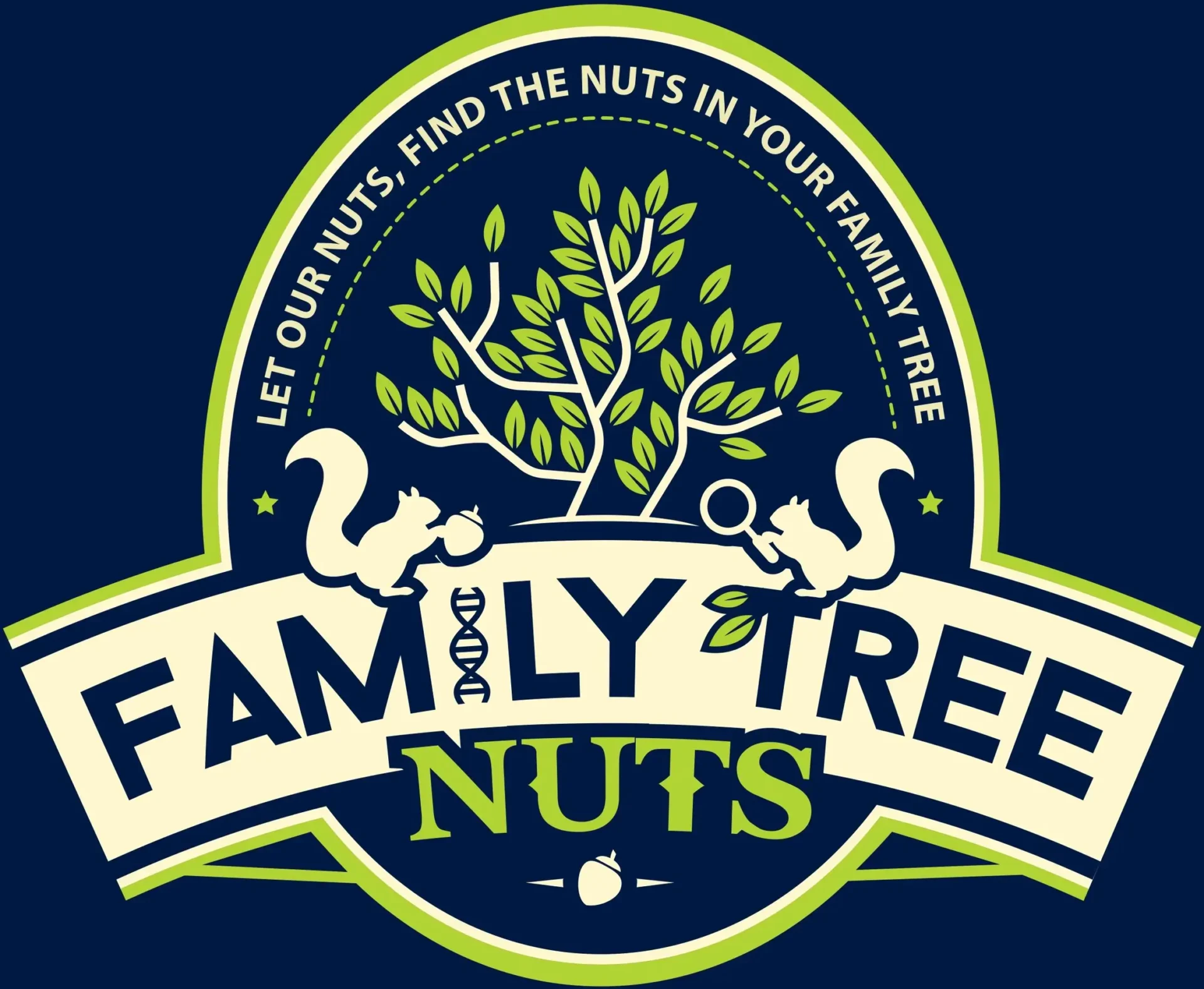HITLER’S NAZI MUNICH
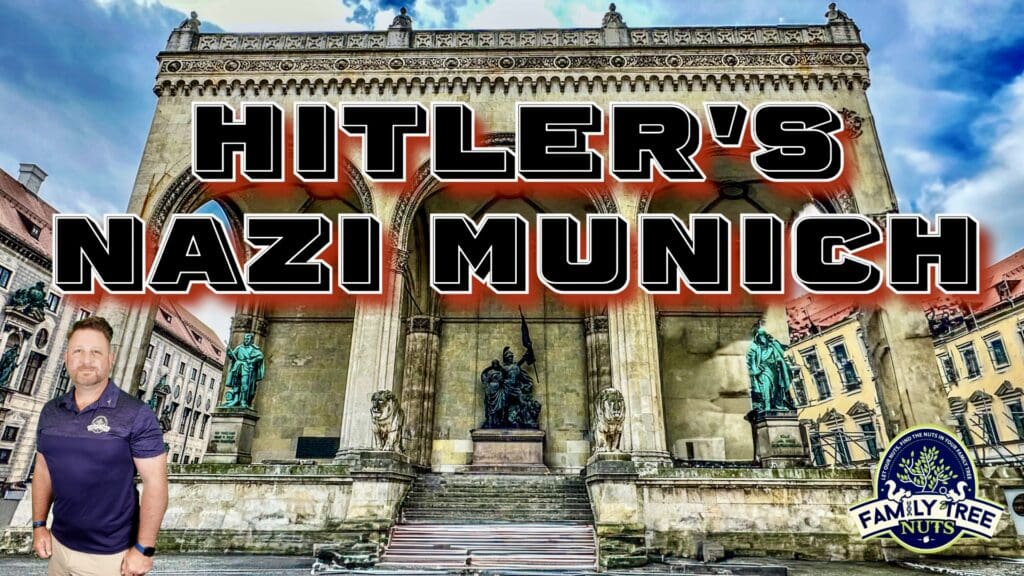
Munich, the capital of Bavaria, was a pivotal city in the early history of the Nazi Party. After World War I, Germany faced economic collapse, political instability, and widespread resentment over the Treaty of Versailles, which ended the war in 1919. Munich, with its conservative population and thriving cultural scene, became a breeding ground for extremist groups. The National Socialist German Workers’ Party, commonly known as the Nazi Party, was established here in 1920, evolving from the German Workers’ Party, which Adolf Hitler joined in 1919. The city’s beer halls, public squares, and political networks provided the infrastructure for the Nazis’ initial growth. Hitler called Munich the “capital of the movement,” a title it held until the party’s focus shifted to Berlin after 1933. This video will detail key sites and events in Munich linked to the Nazis.
Those sites include the Feldherrnhalle, the site of the bloody shoot-out between the Hitler led mob and the police during the 1923 Beer Hall Putch. The Sterneckerbrau which was an early Nazi meeting place, and where Hitler joined the party. The Führerbau, which was the later administrative center for the Nazi’s. Adolf Hitler’s Munich home, the Hofbräuhaus, used for fiery political speeches, the Kristallnacht speech by Joseph Gobbels at Neues Rathaus, and the Munich Museum, tracing the city’s role in the party’s formative years.
Before we begin, a quick disclaimer: This is a recounting of history. We are not here to glorify Adolf Hitler or the Nazi regime, but to understand these places tied to their story. For obvious reasons, it’s important to not forget the history that happened here.
Hey everybody this is Colonel Carson with Family Tree Nuts, and I’m a professional genealogist and a historian. We recently visited these locations in Munich, and I want to share these stories show you the sights, with all of you. At Family Tree Nuts, we build family trees for clients that either don’t know how, don’t have the time, or don’t want to pay those expensive membership fees. We’d love to honor your ancestors for you. We also make history videos all over the United States, and a few countries. If you like videos like these, be sure to subscribe to our YouTube channel. This video is one of many that we have from Germany and about Hitler and the Naizi’s. Now back to the story.

The Feldherrnhalle, or Field Marshals’ Hall, is a monumental structure located on Odeonsplatz in central Munich. Constructed between 1841 and 1844 by architect Friedrich von Gärtner, it was originally built to honor Bavarian military leaders. However, it became a significant site in Nazi history during the Beer Hall Putsch on November 8–9, 1923. This was Hitler’s failed attempt to overthrow the Weimar Republic government. On November 9, Hitler and approximately 2,000 Nazi supporters marched from the Bürgerbräukeller beer hall toward the city center to seize power. They encountered police resistance at the Feldherrnhalle. In the ensuing clash, 16 Nazis and 4 policemen were killed, and the putsch collapsed. Hitler was arrested two days later and sentenced to five years in prison, though he served less than one. After the Nazis took power in 1933, the Feldherrnhalle was turned into a memorial site for the fallen Nazis, whom Hitler declared martyrs. A bronze plaque was installed, and passersby were required to give the Nazi salute when walking past until its removal in 1945. The structure remains intact today, a reminder of its dual history.
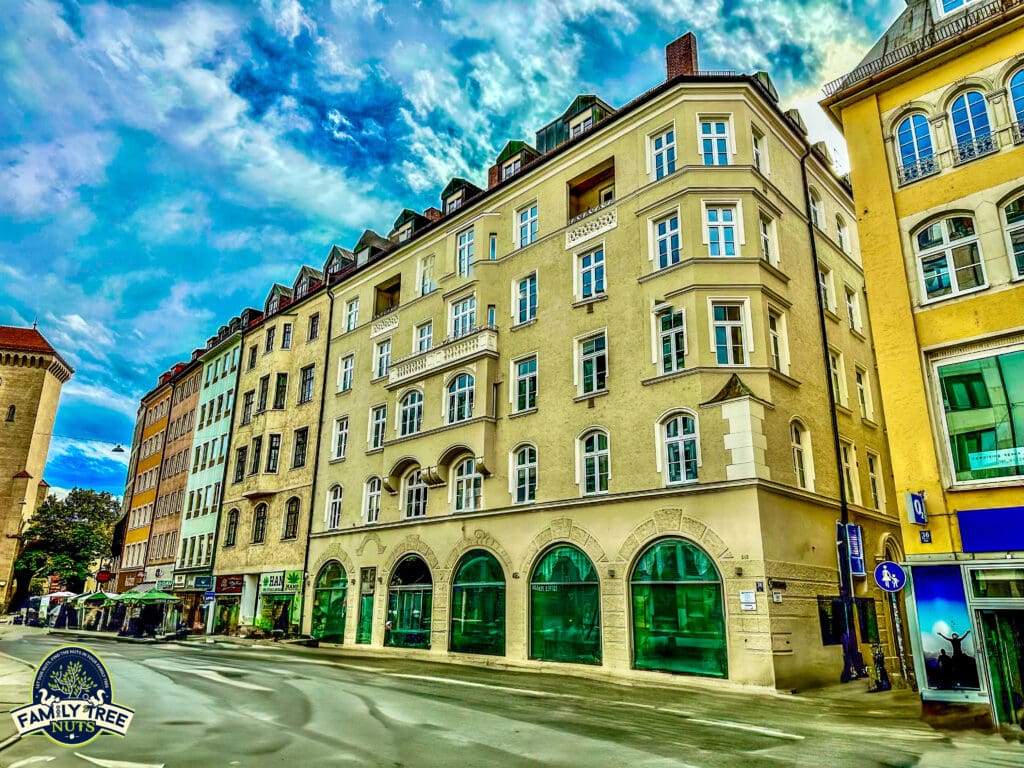
The Sterneckerbrau, was originally a prominent brewery and an early gathering place for the Nazi Party. Hitler joined the precursor German Workers’ Party here on 12 September 1919, becoming member number 55, though party records later adjusted his number to 7 for propaganda purposes. In 1920, the German Workers’ Party rebranded as the National Socialist German Workers’ Party under his influence. On 8 November 1933, the museum of the Nazi Party was opened by Hitler himself. Remarkably, the building was one of the few spared by Allied bombs during World War II. The restaurant closed in 1957, and today the first floor is commercial space, and the upper floors are for residents.
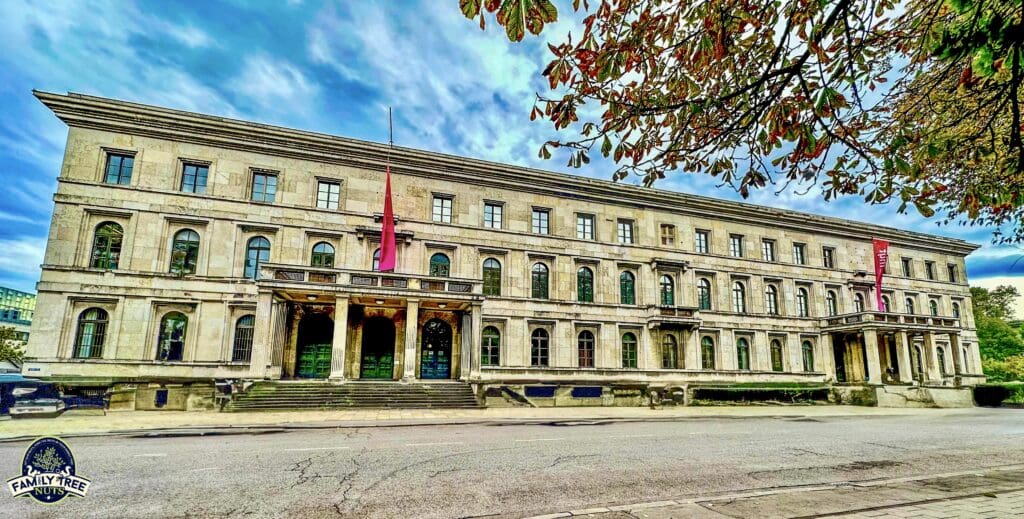
The Führerbau, or Leader’s Building, is located at Arcisstraße 12 in Munich’s Maxvorstadt district. Designed by Paul Ludwig Troost in a stark neoclassical style, it was completed in 1937 as an administrative center for Hitler and Nazi officials. The building featured a grand entrance, marble interiors, and a central hall for receptions. Hitler used an office here during his Munich visits. A significant event at the Führerbau was the signing of the Munich Agreement on 30 September 1938, when Hitler, Neville Chamberlain, Édouard Daladier, and Benito Mussolini agreed to the annexation of Czechoslovakia’s Sudetenland by Germany. A plaque outside the building, installed later, notes this event, marking the moment of appeasement that delayed but did not prevent World War II. The Führerbau was a focal point for Nazi parades, with two monument shrines honoring the 1923 putsch “martyrs” erected nearby. Crowds gathered here for speeches and displays of power. The shrines were destroyed in 1945, leaving only flat ruins visible today. Damaged by Allied bombs, the Führerbau survived and now serves as the University of Music and Performing Arts Munich.

Adolf Hitler resided in Munich from 1913 to 1933, before his chancellorship shifted his focus elsewhere. He was discharged from the German Army in 1920 and returned to Munich and rented a room in this apartment at Tireishstraße 41. At some point he rented an additional room and used it as his office. Hitler lived here for nine and a half years while he soared in the ranks of the Nazi Party. One can only imagine the thoughts and plans that Hitler made while lying in bed here. Today, his apartment is used as a storage room.
In 1929, Hitler moved to Prinzregentenstraße 16 in the affluent Bogenhausen district. He rented a second-floor apartment which was a spacious nine-room unit in a building constructed in 1901. The apartment’s elegance, with high ceilings and large windows, reflected Hitler’s rising status. Hitler lived there with his niece, Gee Lee Rah Bal until her suicide with his pistol in 1931, an incident that sparked rumors but remains unresolved. After 1933, he used it sporadically, preferring his Berghof retreat or Berlin offices. American troops occupied it in 1945, stripping it of furnishings. Today, it’s a private residence, unmarked and inaccessible to the public, blending into the neighborhood despite its historical weight.
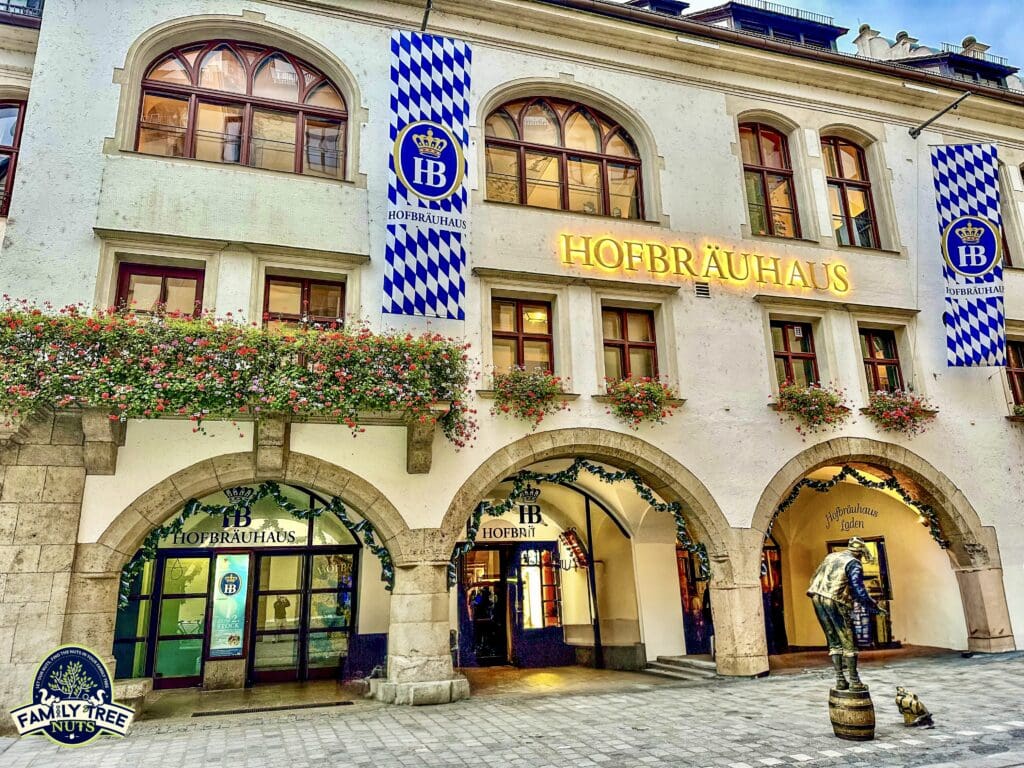
The Hofbräuhaus, a famous beer hall at Platzl 9 in Munich’s old town, was a key venue for early Nazi gatherings. Built in 1589 by Bavarian Duke Maximilian I, it was a popular meeting place by the early 20th century. On 24 February 1920, Hitler delivered a speech here to over 2,000 people, announcing the Nazi Party’s 25-point program, which outlined its ideology, including anti-Semitism and opposition to the Versailles Treaty. The event marked the party’s public launch. The Hofbräuhaus hosted numerous Nazi meetings in the following years, often accompanied by propaganda and recruitment efforts. Its large capacity and central location made it ideal for such gatherings. After the 1923 Beer Hall Putsch, the Nazis continued to use it symbolically until they gained power. The building endured World War II with minor damage and operates today as a beer hall and tourist site, its Nazi history a footnote to its longer legacy.
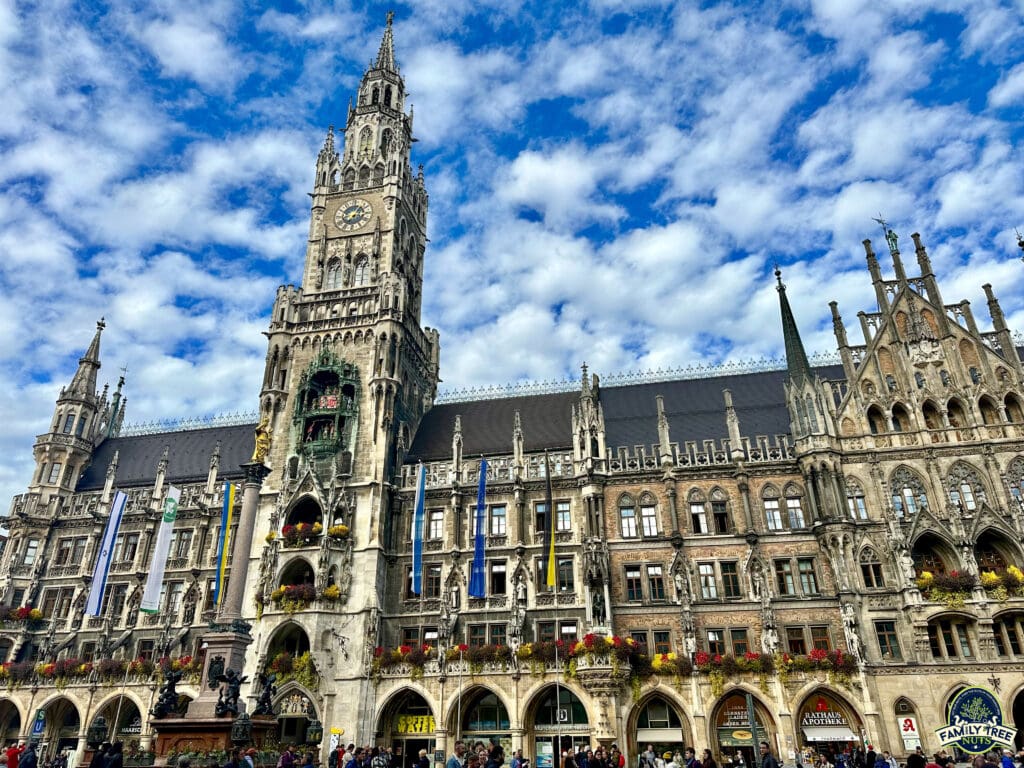
The Neues Rathaus, or New Town Hall, on Marienplatz, is Munich’s city hall, built between 1867 and 1908 in Gothic Revival style. Its 85-meter tower now houses a toy museum, and Munich’s famous glockenspiel, a mechanical clock with figurines, performs daily in the background, attracting visitors. During the Nazi era, the Neues Rathaus was controlled by party officials, and on 9 November 1938, Joseph Gobbels, the Nazi Minister of Propaganda gave a fiery speech that later that night led to the the violence broke out all over Germany which came to be called Kristallnacht or the “Night of Broken Glass”. Nazi-led mobs attacked Jewish properties, burning synagogues and arresting over 1,000 Jewish men, sending many sent to Dachau. Neues Rathaus staff did not act to stop the violence, reflecting the regime’s grip on local governance. It remains a functioning city hall, with no specific memorial to these events on site.
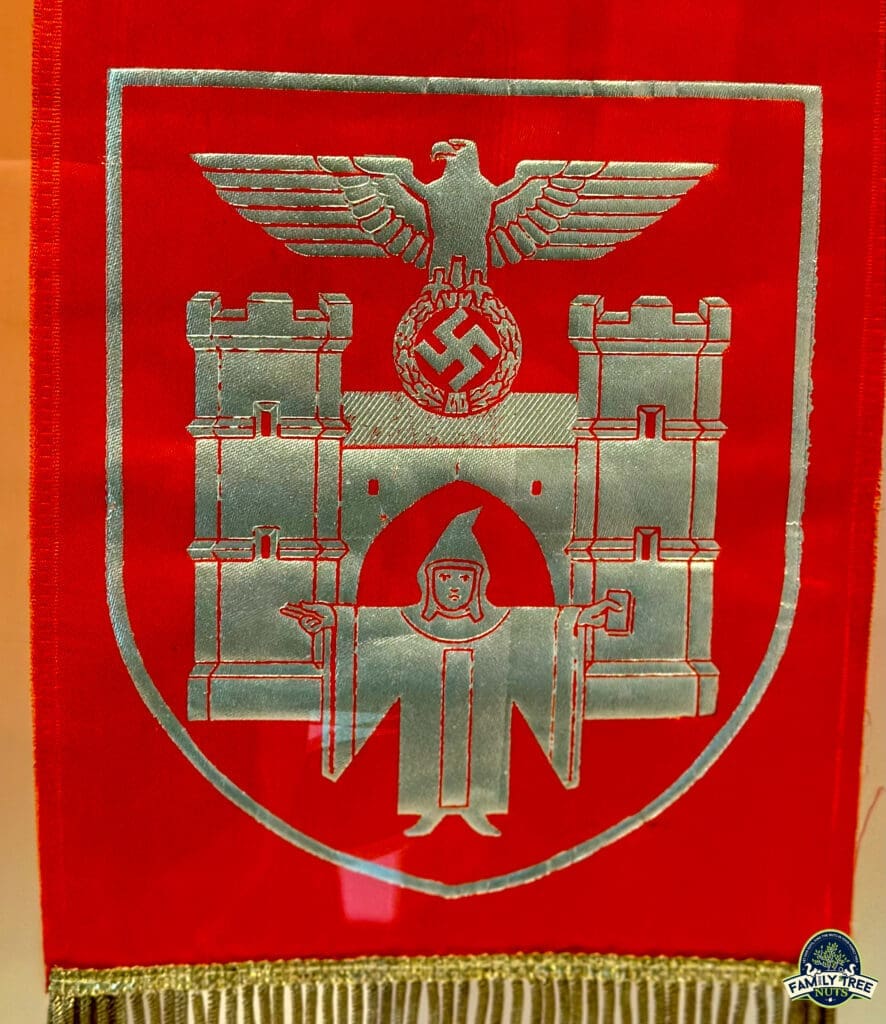
The Münchner Stadtmuseum, or City of Munich Museum is at St.-Jakobs-Platz 1, was founded in 1888 to preserve Munich’s history. Housed in a Gothic complex from the 14th century, it survived World War II intact. During Nazi rule, its exhibits were censored to align with propaganda, omitting critical perspectives. Post-war, it shifted focus, adding the “National Socialism in Munich” exhibition in the 1990s, expanded in 2006. This exhibit, spanning 400 square meters across multiple rooms, is one of Germany’s most detailed on the subject. It includes over 500 artifacts: Nazi flags, SA uniforms, Hitler’s early sketches, and putsch-related weapons. Photographs show Munich rallies, while documents detail the 25-point program and Kristallnacht orders. A model of the Brown House and footage of the 1938 synagogue destruction are displayed. Personal items, like letters from resistance fighters executed at Stadelheim Prison, contrast Nazi materials. Interactive displays trace the party’s rise, fall, and Munich’s post-1945 reckoning, making it a comprehensive resource for the subject.
Munich’s early embrace of the Nazi Party in the 1920s shaped its identity as the movement’s birthplace. The Feldherrnhalle Führerbau, Brown House, Hitler’s home, Hofbräuhaus, and Neues Rathaus were stages for propaganda, power grabs, and persecution. The Munich Museum now catalogs this history, offering a lens into the city’s past. From the Beer Hall Putsch to Kristallnacht, Munich’s sites witnessed the Nazis’ ascent, later preserved or repurposed after their defeat. By 1933, as Hitler assumed national control, Munich’s role as the “capital of the movement” was eclipsed by Berlin, but its legacy endures in stone and memory. The Germans don’t hide from their history, they put it in full view to forever be used as a lesson for mankind.
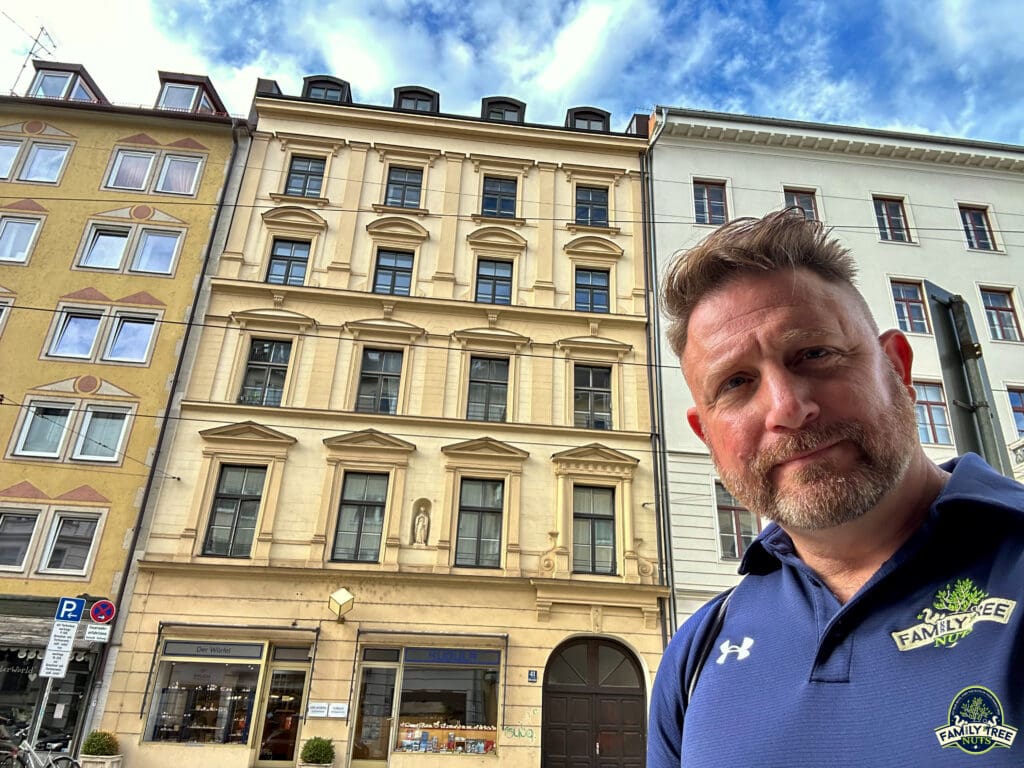
So now we know the stories and have seen the sights in Munich related to the Third Reich. What do you think? Have you ever been here before, or is it one you bucket list? What do you think of the history of the places? Do you think they should be bulldozed, or should the history be remembered? We’d love to hear what you have to say in the comments below. WE are proud to share this information with all of you, and be sure to see the video from here at the link below. And remember, Family Tree Nuts, let out nuts find the nuts in your family tree.
-Colonel Russ Carson, Jr., Founder, Family Tree Nuts
